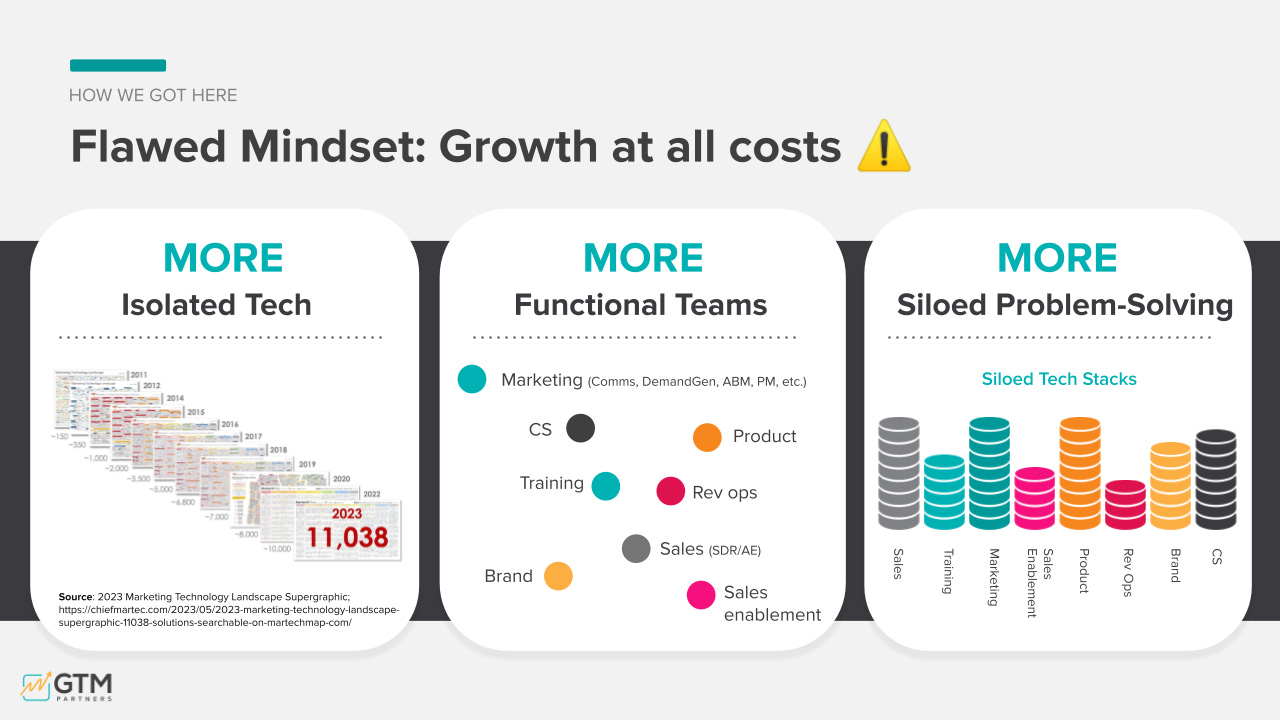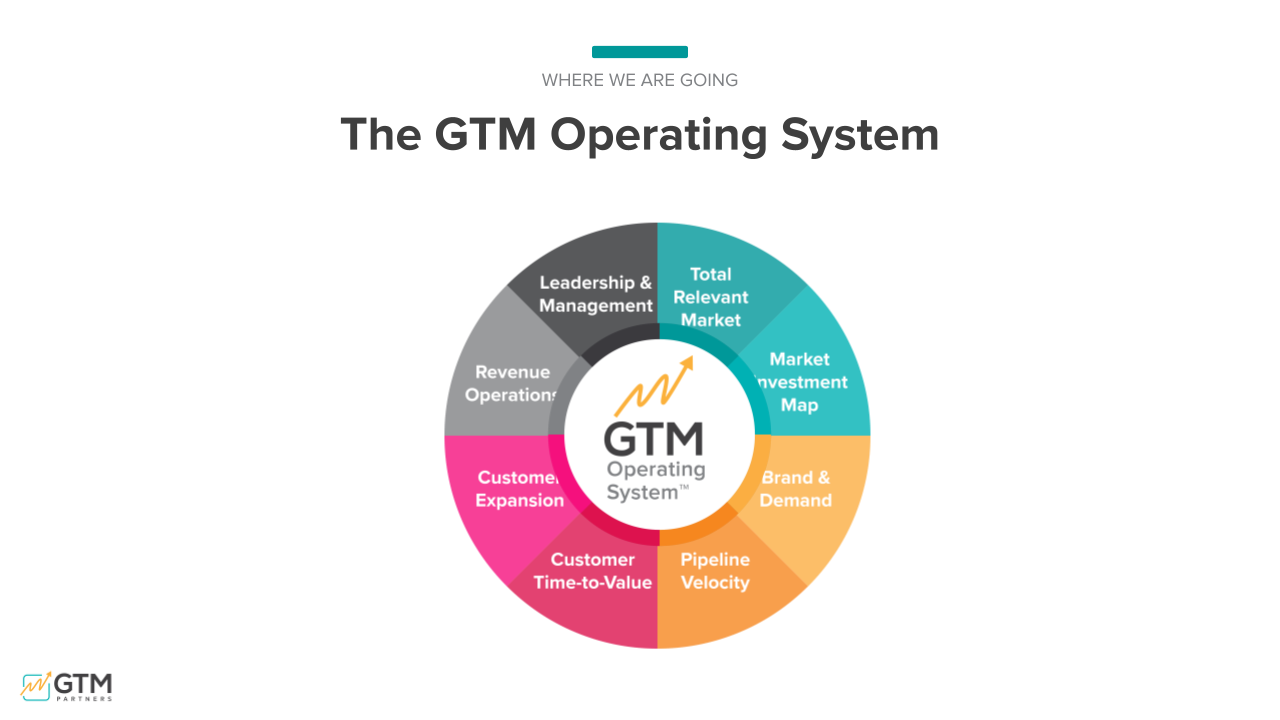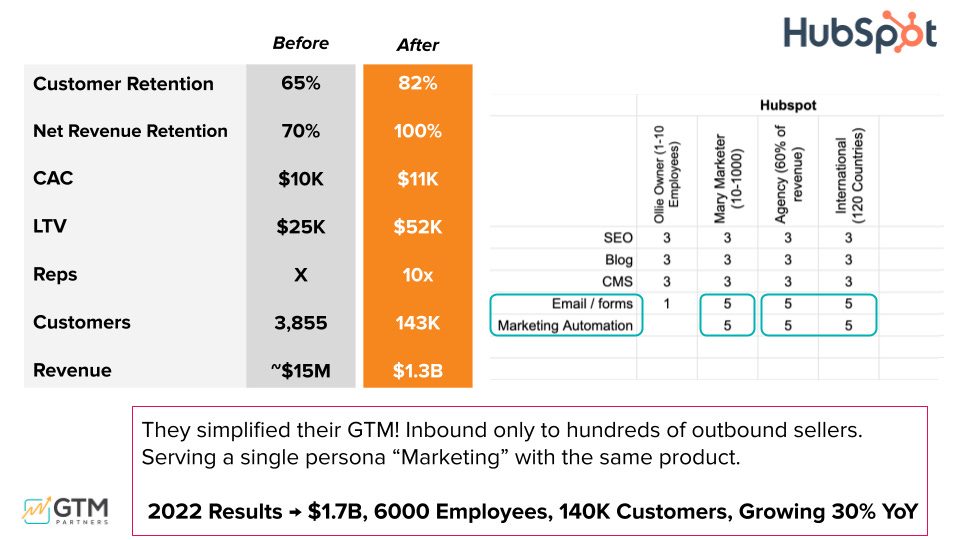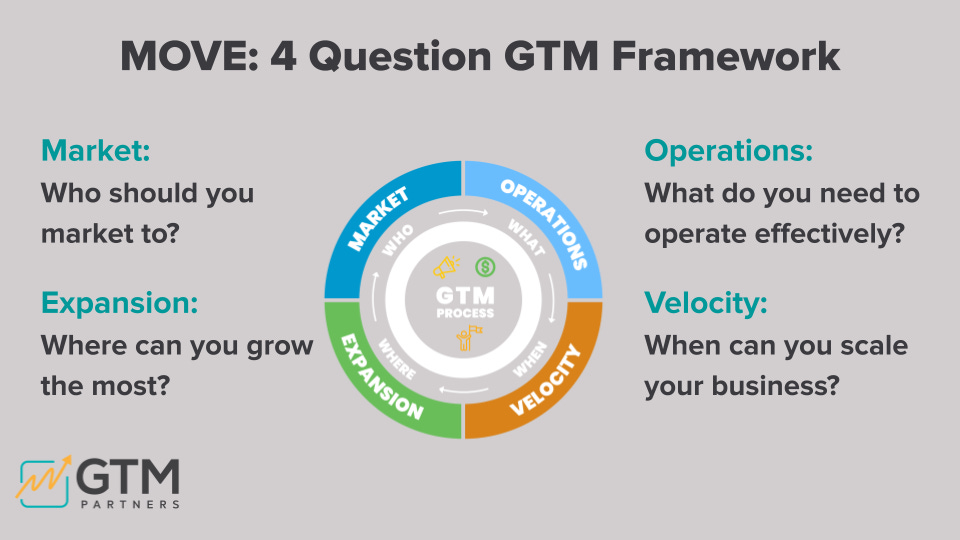Filters
The Future of GTM is here.
In B2B technology companies, we’ve been obsessed with the relentless pursuit of growth at any cost over the last few decades.
However, it’s becoming clear that this approach is unsustainable.
GTM has to evolve to drive efficient growth.
How We Got Here
1. Isolated Technological Environment
The proliferation of GTM technology within the B2B space has gotten insane!
Tools and platforms flood the market. In fact, in Scott Brinker’s 2023 MarTech Landscape, there are now more than 11,000 companies!
Yet, amidst all of this abundance, it’s harder than ever to navigate this labyrinth of options.
It’s clear we need a more discerning approach to technology adoption—one that prioritizes alignment with strategic objectives over sheer quantity.
2. Rise of Specialized Functional Teams
In tandem with the technological explosion, B2B organizations have prioritized specialized functional teams.
Departments like marketing, sales, product, customer success have become increasingly compartmentalized, operating within their own spheres of influence. The role of CMO didn’t really become common until around 2000 and we didn’t see the CRO title until around 2010.
This fragmentation poses a significant challenge to collaboration and synergy across the GTM spectrum.
Within marketing alone, the landscape is delineated into various specializations—product marketing, demand generation, brand management, operations, account-based marketing (ABM), communications, and more—each with its own set of objectives and priorities.
While specialization can bring expertise forward, it also risks creating silos that hinder holistic approaches to problem-solving and strategy execution.
3. Silos in Problem-Solving
The trend towards specialized teams exacerbates the issue of siloed problem-solving.
As functional teams focus inward on their respective domains, the broader organizational perspective often gets lost.
Challenges and opportunities are tackled within silos, limiting the exchange of insights and best practices across departments.
This fragmentation impedes the flow of information and innovation, hindering the organization's ability to adapt and thrive in a rapidly changing market landscape.
The Brutal Truth
Go to Market is hard.
So many tech choices, isolated teams, and siloed decision making mean that GTM is hard.
Just check out a few of the stats from G2’s report on Buyer Behavior Trends:
The B2B buying process is complex. 80% of B2B companies have buying committees that influence software purchasing decisions with 22 distinct roles which are involved in the process.
SaaS contracts are shorter. More than half of software contracts are for fewer than 6 months and only 11% last more than two years.
The importance of the vendor’s sales team is declining. 68% of B2B buyers only involve the vendor’s sales team at the last stage of the buying process.
Vendors need to show value quickly. Buyers list simple implementation, a quicker return on investment (ROI), and ease of use as their three most important considerations.
Renewals are getting trickier. Only 45% of software buyers renew without consideration. 53% research and contemplate alternatives when a product is up for renewal.
So you’re not alone if you’re feeling like GTM is harder than ever at a time when we need efficient growth badly.
How will you know GTM is hard?
Because you’re experiencing a few of the 15 problems or 5 valleys of death we shared a few weeks ago.
The Future of GTM
As companies navigate the ever-evolving landscape of go-to-market (GTM) strategies, there's a clear shift from traditional approaches to more innovative and integrated methodologies. Here's how companies can evolve their GTM teams from old ways to new paradigms.
The 8 GTM Transformations
Focus on Total Relevant Market (TRM): Instead of solely focusing on the total addressable market (TAM), which may include prospects with varying degrees of relevance, companies should shift towards identifying and targeting their TRM—prospects who align closely with the company's ideal customer profile and are more likely to convert into valuable customers.
Product Integration Rules: Companies should think less about creating (or buying) multiple product innovations that cater to single functions. Instead, companies should offer comprehensive solutions that address multiple needs or functions within a single platform, streamlining processes for customers and enhancing overall user experience.
Understanding and Leveraging the 6 GTM Motions: Rather than focusing solely on inbound and outbound marketing strategies, companies must leverage more of the 6 GTM motions appropriately. That means leaning into event-led growth, product-led growth, partner-led growth, and community-led growth, in addition to inbound and outbound efforts, when it makes sense to do so based on your product and market. By diversifying their GTM strategies, companies can reach a wider audience and drive more efficient growth through various channels.
Shift from Sales Heroics to Repeatable, Scalable GTM Plays: Instead of relying solely on the heroics of a few talented sellers to drive sales, companies are transitioning towards developing repeatable, scalable GTM plays. These plays are systematic approaches to customer acquisition and retention that can be replicated across different markets and customer segments, reducing reliance on individual performance and ensuring consistency in outcomes.
Reduced Time to Value: Companies are increasingly focused on accelerating time to value for customers, shifting from a model where it takes 12 months or more to demonstrate value, to one where they can showcase ROI within 30 days or less. Faster time to value not only enhances customer satisfaction but also accelerates revenue generation and improves chances for renewal and expansion.
Focus on Net Revenue Retention (NRR): Rather than solely concentrating on customer retention, companies are now prioritizing net revenue retention (NRR). This metric takes into account not only retained customers but also upsells, cross-sells, and expansions within the existing customer base, providing a more comprehensive view of revenue growth potential.
Cross-Functional GTM Dashboard: Instead of relying on department-focused metrics, companies should embrace cross-functional GTM dashboards that provide a holistic view of key performance indicators (KPIs) across sales, marketing, customer success, and other relevant functions. This enables better collaboration, alignment, and decision-making across the organization.
Fractional Leadership: In addition to traditional team structures, more companies are also working with fractional GTM leaders. This approach allows for more efficient resource allocation, streamlined communication, and faster decision-making, ultimately driving greater agility and adaptability in the GTM process.
The GTM Operating System Can Help
The 8-pillar GTM Operating System is an integrated approach to solving GTM problems across business units at the strategic, operational, and tactical levels.
It crosses GTM silos (sales, marketing, customer success, and product).
It helps GTM leadership teams identify their biggest issues and make a plan to solve them in order to achieve efficient growth.
If we can help you identify and solve your biggest GTM challenges, we’d love to talk.
We’re just back from a really amazing trip to Tampa for our GTM Made Simple roadshow. Next up, we’ll be in Austin on March 22.
Have a wonderful week!
Love,
The GTM Partners’ Team





